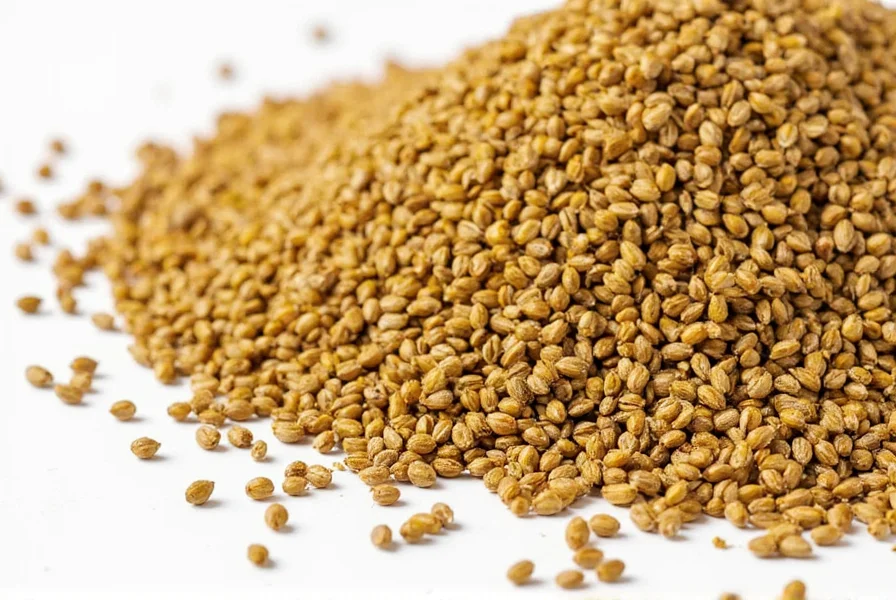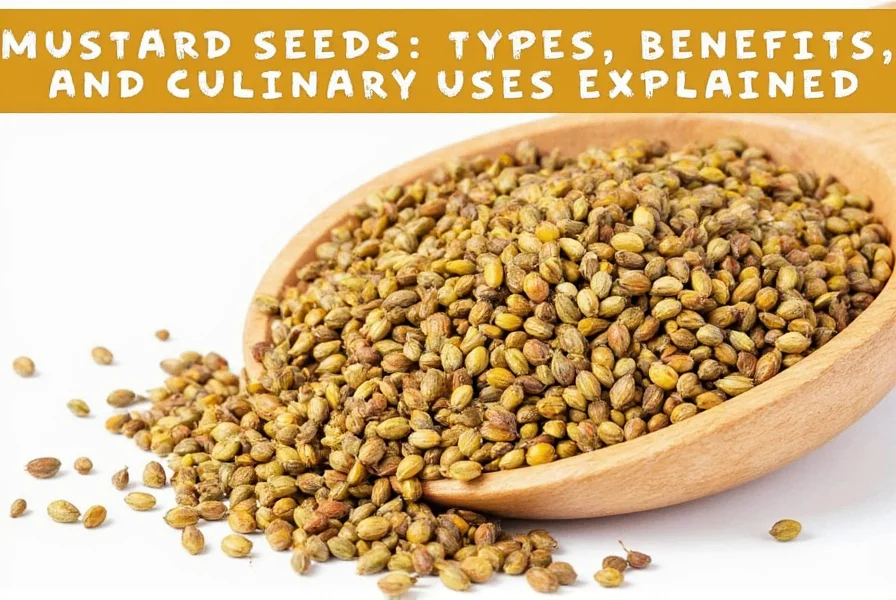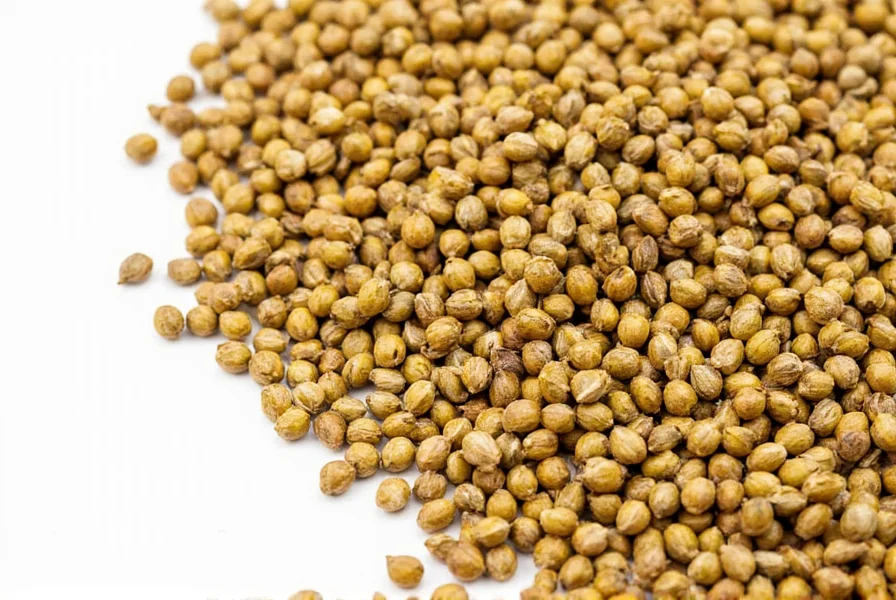Understanding Mustard Seed Varieties and Their Culinary Applications
Mustard seeds represent one of the world's oldest known spices, with archaeological evidence dating their use back to prehistoric times. Today's gardeners and cooks work primarily with three distinct types, each offering unique flavor profiles and culinary applications.
Yellow Mustard Seeds (Sinapis alba)
Often called white mustard seeds despite their pale yellow color, these mild-flavored seeds dominate American yellow mustard production. Gardeners appreciate their adaptability to various climates, making them ideal for beginner gardeners exploring how to grow mustard plants from seeds. Chefs value their subtle heat that develops when crushed or ground, perfect for pickling liquids and salad dressings.
Brown Mustard Seeds (Brassica juncea)
Originating in the Himalayan region, brown mustard seeds deliver a more intense, pungent flavor that intensifies when cooked. These seeds form the backbone of Dijon mustard and many Indian spice blends. When exploring using mustard seeds in Indian cuisine, you'll discover they're typically tempered in hot oil to release their complex nutty aroma before adding other ingredients.
Black Mustard Seeds (Brassica nigra)
The most pungent variety, black mustard seeds offer the strongest heat and distinctive pop when cooked. Though less common commercially due to harvesting difficulties, they remain prized in Southern Indian and Ethiopian cooking. Their robust flavor makes them excellent for fermented mustard preparations where their intense heat mellows beautifully during the curing process.
| Mustard Seed Type | Flavor Profile | Best Culinary Uses | Storage Life |
|---|---|---|---|
| Yellow | Mild, slightly tangy | Yellow mustard, pickling, dressings | 2-3 years |
| Brown | Medium heat, complex | Dijon mustard, Indian curries, sauerkraut | 1-2 years |
| Black | Strongest heat, nutty | Specialty mustards, Southern Indian dishes | 1 year |
Nutritional Powerhouse: Health Benefits of Mustard Seeds
Beyond their culinary value, mustard seeds deliver impressive nutritional benefits that contribute to overall wellness. A single tablespoon (9g) of whole mustard seeds contains approximately 59 calories, 3g of fat, 3g of carbohydrates, and 3g of protein, along with significant amounts of essential nutrients.
Research shows that the nutritional value of mustard seeds includes high concentrations of selenium (27% of daily value), magnesium (21%), and omega-3 fatty acids. These compounds work synergistically to support metabolic health, reduce inflammation, and potentially lower cardiovascular disease risk. The glucosinolates in mustard seeds also demonstrate promising antioxidant properties that may help protect against certain cancers.

Mastering Mustard Seed Preparation Techniques
Proper preparation unlocks mustard seeds' full flavor potential while controlling their characteristic heat. Unlike pre-made mustards, working with whole seeds gives you complete control over the final product's texture and intensity.
For optimal results when storing mustard seeds properly, keep them in an airtight container away from light and heat. Whole seeds maintain freshness for 2-3 years, while ground seeds lose potency within 6 months. Refrigeration extends shelf life significantly, especially in humid climates.
The transformation from seed to spread involves a fascinating chemical reaction. Mustard seeds contain myrosinase, an enzyme that activates when combined with liquid, creating the characteristic pungency. The pH level of your liquid dramatically affects the final heat:
- Vinegar (acidic): Creates milder mustard that develops slowly
- Water (neutral): Produces immediate, intense heat that fades quickly
- Wine or beer: Offers balanced heat with complex flavor notes
Growing Your Own Mustard: From Seed to Harvest
Cultivating mustard plants represents one of the most rewarding beginner gardening projects. These fast-growing plants thrive in cool weather and can produce harvestable seeds in as little as 80-90 days from planting.
For successful growing mustard plants from seeds, follow these steps:
- Plant seeds ¼ inch deep in well-draining soil after last frost
- Maintain consistent moisture during germination (5-7 days)
- Thin seedlings to 6-8 inches apart for optimal growth
- Harvest leaves for greens when young (20-40 days)
- Allow plants to flower and develop seed pods for seed harvest
- Collect pods when they turn brown but before they burst
Many gardeners appreciate mustard's dual-purpose nature—enjoying both the peppery leaves as microgreens and the mature seeds. The plants also serve as excellent cover crops that suppress weeds and improve soil health through biofumigation.

Common Misconceptions About Mustard Seeds
Despite their long history, several misconceptions persist about mustard seeds. Many believe all mustard seeds are interchangeable in recipes, but the difference between black and yellow mustard seeds significantly impacts final flavor. Substituting one variety for another can dramatically alter a dish's character.
Another common misunderstanding involves heat development. Contrary to popular belief, mustard's pungency doesn't come from capsaicin like chili peppers. Instead, it results from the enzymatic reaction between myrosinase and glucosinolates when seeds contact liquid. This explains why properly prepared mustard can range from mild to intensely hot based on preparation method rather than seed variety alone.
Practical Applications Across Global Cuisines
Mustard seeds' versatility shines through their diverse applications worldwide. In Indian cooking, brown mustard seeds form the foundation of tempering (tadka) for dals and vegetable dishes. French cuisine transforms them into the sophisticated Dijon style through verjuice fermentation. Southern American traditions feature them prominently in pickling recipes and barbecue sauces.
Modern chefs increasingly explore creative uses for mustard seeds beyond traditional applications, incorporating them into unexpected dishes like fruit chutneys, salad toppings, and even dessert components. The seeds' natural emulsifying properties make them valuable in vinaigrettes and creamy sauces where they help bind ingredients without additional stabilizers.
What's the difference between mustard seeds and mustard powder?
Mustard seeds are the whole, intact seeds from the mustard plant, while mustard powder is made from grinding those seeds. The grinding process activates enzymes that create heat, so powder develops pungency faster than whole seeds. Powder also absorbs liquid more readily, making it better for quick preparations, while whole seeds offer more controlled heat release and textural interest in cooked dishes.
How can I reduce the heat of mustard seeds in cooking?
To reduce mustard seed heat, use acidic liquids like vinegar or lemon juice when preparing mustard, as acidity slows the enzymatic reaction that creates pungency. Adding the liquid cold rather than warm also produces milder results. For cooked dishes, adding mustard seeds early in the cooking process allows more time for the heat to mellow, while adding them at the end preserves more sharpness.
Can I substitute one type of mustard seed for another in recipes?
While possible, substituting mustard seed varieties significantly impacts flavor. Yellow seeds are mildest and work best in American-style mustards and pickling. Brown seeds offer medium heat ideal for Dijon and Indian cooking. Black seeds provide the strongest flavor, best reserved for specialty applications. When substituting, use 1.5x yellow seeds for brown, or 2x yellow for black, to approximate heat levels, but expect flavor differences.
How do I know if my mustard seeds have gone bad?
Fresh mustard seeds should have a pleasant, slightly pungent aroma and feel hard when bitten. Signs of spoilage include rancid or musty odors, visible mold, or a soft, crumbly texture. Properly stored in an airtight container away from light and heat, whole seeds remain fresh for 2-3 years. Ground seeds lose potency faster—typically within 6 months—so always check for faded aroma or flavor when using older stocks.
Are mustard seeds safe for people with thyroid concerns?
Mustard seeds contain goitrogens, compounds that may interfere with thyroid function when consumed in extremely large quantities. However, typical culinary use presents minimal risk for most people. Those with existing thyroid conditions should consult their healthcare provider, but moderate consumption as part of a balanced diet generally poses no significant concerns. Cooking reduces goitrogenic compounds, making prepared mustard safer than raw seeds for sensitive individuals.











 浙公网安备
33010002000092号
浙公网安备
33010002000092号 浙B2-20120091-4
浙B2-20120091-4